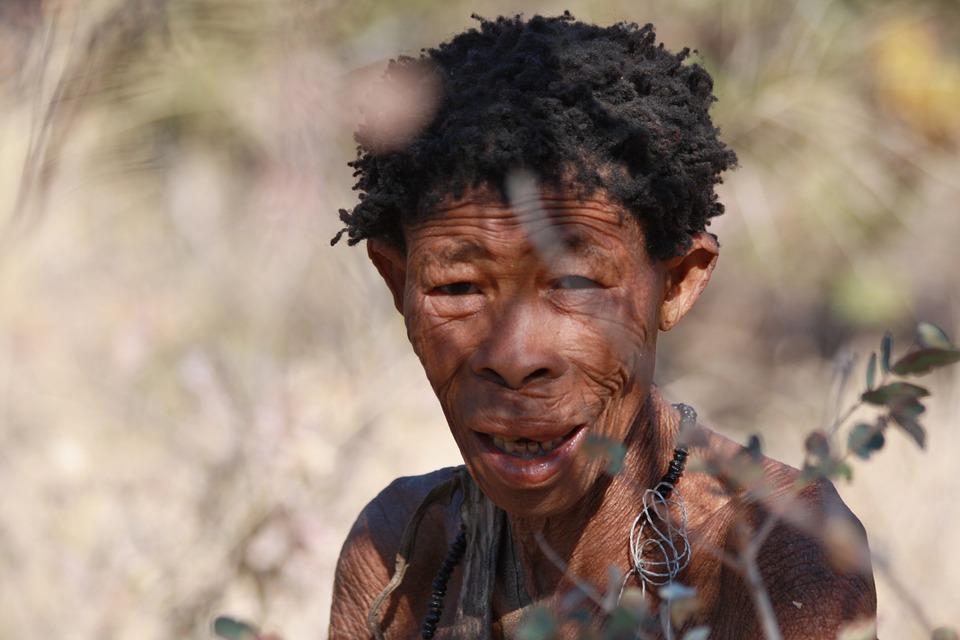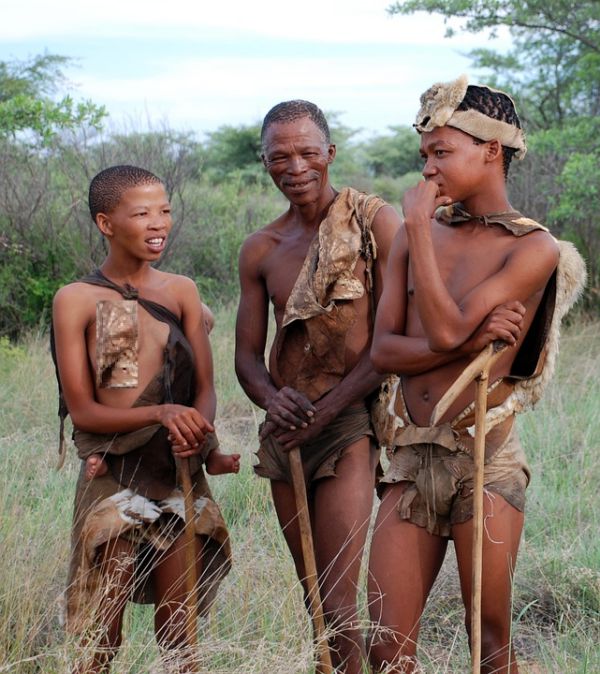San People Are The Oldest Population Of Humans On Earth

First Africans On Earth
TBT: Sonqua, Bushmen, Saake… They have been called by various names by many African tribes and European settlers, who had difficulties in identifying them and their culture. Having inhabited Southern Africa for more than 20 000 years, the San people are the oldest residents of Southern Africa.
Their territory was not only limited to South Africa but it also expanded into Botswana, Namibia, Angola, Zambia, Zimbabwe and Lesotho. Although the groups living in these areas had differences, they were connected by a shared history and linguistic.
HOW IT ALL STARTED
The early signs of San tribes were found to date back to Early Stone Age. There were many clans scattered along Southern Africa who lived a migratory lifestyle, making caves their temporary homes as they go along. Before they started domesticating animals, they were very skilled at tracking and hunting. Another skill they developed over time was to investigate and make us of the flora around them for medicinal purposes.

INTERACTIONS WITH OTHER TRIBES
As migrations started to occur in other regions of Africa, the San people subsequently started interacting with them. One of them was Khoikhoi that often gets mixed up with the San People. Unlike the San People, Khoikhoi were able to domesticate animals and live closer to a farming-lifestyle in today’s Western Cape.
On the other hand, people of Bantu heritage were also migrating from Central and Western Africa towards the south.
They were also much more settled, living in small villages and planting crops. By the 16th and the 17th centuries, the southern half of Africa was populated by three groups: San, Khoikhoi and Bantu.

WHEN EUROPEAN SETTLERS ARRIVED
The struggles for San People had already started when they had to share the space with settled communities, especially Bantu groups. Thus, small battles ensued between the two, which did not end in the favor of the San who were disadvantages in terms of numbers and weapons.
Things got much worse with the arrival of European settlers, since they were not able to roam freely and migrate as they liked. Those who were caught or defeated after a battle were forced into slavery. The animals they used to hunt for food were hunted or domesticated by farmers, so they no longer had sufficient access to them.
The tribes who refused to join any of the settlements as slaves were put through mass destruction. Overall, they were greatly reduced in numbers, while the remaining people assimilated in the communities that they were placed in.

SOCIAL LIFE
Although San People had no formal authority figures, they would grant leadership to people with experience and respect within the group through voting.
Instead of a great leader with absolute power, there would be guides or pioneers in every field from hunting to healing. Decisions would be made after council meetings and debates. The economy was based on gifting or trading goods and services.
Given the scarcity of the resources, they were not picky with the food. Among the animals they hunted down were antelopes, zebras, lions, fishes and insects.
They would either roast the meat on fire or place it in boiled water. For water, they were usually collecting rain water using empty ostrich egg shells, digging holes into the ground to search for water or squeezing plant roots to extract moisture.
The most common method for hunting was with bone and arrows. They would poison the tip of the arrow to make the death quicker; however, the poison would not contaminate the meat.
They were also good at setting up various traps such as pitfalls with spikes planted underneath. In terms of distribution, it was usually the man whose arrow shot the animal that decided on the distribution of the meat.
On the other hand, women were occupied with gathering plants that they cooked for their immediate families. Despite the segregation of labor in social life, hunting and plant-gathering were unisex activities. Women were able to participate in hunting and men were able to help women with gathering plants.
In fact, the women were treated with respect and a sense of equality to the extent that they would be able to make decisions on behalf of their families, own water holes and foraging areas.

BELIEF SYSTEM
The San beliefs differed from one clan to the other. While some clans believed in a single and powerful entity, other worshipped nature, the Sun and the moon. After-life was also an important concept which they believed in, so they always paid homage to their deceased loved ones.
There were four main types of rituals: a boy’s first kill, a girl’s first period, marriage and trance experience. When a boy killed an eland or an antelope, he would be considered transitioning into an adult.
Another interesting ritual was during a girl’s puberty where the women of the tribe would perform a dance that imitated the mating of Eland cows.
Ritual dances and shamanic experiences were of great importance as they were used to practice medicine and observe the effects of herbal medication.
The herb extracts would often be hallucinogenic, putting the people into a dream-like state of mind. Then, they would draw the images appearing before their eyes on cave walls.
The red paint was usually made of animal fat, milk and blood while manganese oxide and charcoal was used for black and white.
TODAY’S WORLD AND THE SAN PEOPLE
The controversy around the San People still continues to this day, particularly in Botswana. In the 70s, government took a substantial amount of land from San People and reallocated them to pastoral farmers, especially the farmers of Tswana descent.
In addition, many San tribes were evicted from Kalahari Game Reserves and forced to relocate. South Africa has also lots of conflicts regarding the San.
Because they were given no land-rights, they are mainly living in rural areas and in extreme poverty, being driven into alcoholism, prostitution and crime.
Despite the never-ending struggle, there are also attempts to preserve and resurrect what is left of the San Culture. The rock art and paintings inside hundreds of caves have been taken under protection, while many organizations initiated education centers and museums about the San Heritage.
Recommended Stories: Travel Africa
Visiting Africa soon? Why not visit South African-Namibian border and learn more about the Oldest Population of Humans On Earth…
Credit: Research/ Ghanaeducation/Southafrica/Education/wiki/Passdownhistory


